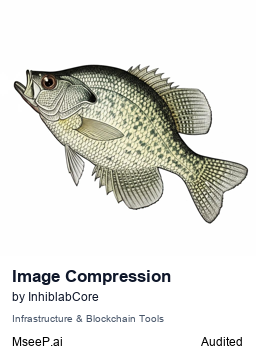About
A microservice that compresses JPEG, PNG, WebP, and AVIF images with smart quality control, batch processing, and offline usage, helping developers optimize image assets for speed and UX.
Capabilities

Overview
The mcp-image‑compression server provides a lightweight, high‑performance microservice that compresses images on demand using the Model Context Protocol (MCP). It solves a common pain point for web and mobile developers: delivering high‑quality images while keeping file sizes small enough to reduce load times, bandwidth usage, and improve overall user experience. By exposing a single MCP tool () that accepts image URLs, desired quality settings, and target formats, the service removes the need to embed heavy compression libraries in client code or rely on external APIs that may introduce latency or cost.
What the Server Does
When an AI assistant invokes the tool, it passes a list of image URLs along with optional parameters for quality (0–100) and output format (, , , or ). The server fetches each image, automatically selects optimal compression parameters based on the content (e.g., preserving detail in photographs versus flat colors in graphics), and returns URLs pointing to the compressed versions. The entire workflow is stateless, enabling horizontal scaling and seamless integration into existing MCP‑enabled pipelines.
Key Features
- Multi‑format support: Handles JPEG, PNG, WebP, and AVIF—covering the most widely used web formats.
- Offline usage: Operates without an internet connection, making it suitable for edge deployments or environments with strict network policies.
- Smart compression: Uses content‑aware algorithms to balance visual fidelity against file size, reducing manual tuning.
- Batch processing: Accepts multiple URLs in a single request and processes them in parallel, dramatically improving throughput for large media collections.
- Quality control: Developers can specify a numeric quality value, giving fine‑grained control over the trade‑off between size and clarity.
Use Cases & Real‑World Scenarios
- Website optimization: Automatically compress assets during a build step or CI pipeline to ensure pages load faster on mobile networks.
- Content management systems: Provide a backend service that compresses user‑uploaded images before they are served to visitors.
- Mobile apps: Reduce the size of images stored locally or transmitted over cellular connections without sacrificing user experience.
- AI‑driven workflows: Enable a Claude or other AI assistant to suggest or execute image compression as part of a broader content‑creation or editing task.
Integration with AI Workflows
Because it follows the MCP specification, the server can be plugged into any MCP‑enabled assistant with minimal configuration. A developer simply adds the tool to their MCP server list and references it in prompts or action plans. The assistant can then request compression on-the-fly, retrieve the resulting URLs, and embed them in generated HTML, markdown, or documentation. This tight coupling allows AI agents to act as full‑stack helpers—compressing images, generating code snippets, and updating assets—all within a single conversational loop.
Unique Advantages
- Zero‑dependency deployment: No need for external services or APIs; the server runs locally in a Docker container or via NPX, ensuring privacy and compliance.
- Performance‑oriented: Built with a focus on speed, the service can process thousands of images per minute when scaled horizontally.
- Open‑source and MIT licensed: Developers can audit, modify, or extend the compression logic without licensing constraints.
In summary, mcp-image‑compression offers a ready‑made, high‑quality image compression capability that plugs directly into AI assistants and developer pipelines, helping teams deliver faster, lighter web experiences without sacrificing visual quality.
Related Servers
Netdata
Real‑time infrastructure monitoring for every metric, every second.
Awesome MCP Servers
Curated list of production-ready Model Context Protocol servers
JumpServer
Browser‑based, open‑source privileged access management
OpenTofu
Infrastructure as Code for secure, efficient cloud management
FastAPI-MCP
Expose FastAPI endpoints as MCP tools with built‑in auth
Pipedream MCP Server
Event‑driven integration platform for developers
Weekly Views
Server Health
Information
Explore More Servers
Mcp Prompt Mapper
Generate optimized prompts for Claude, Grok, and OpenAI APIs
Upstash
MCP Server: Upstash
Logseq MCP Server
Seamless LLM integration with Logseq knowledge graphs
1Panel MCP Server
Powerful 1Panel integration via Model Context Protocol
MCPheonix
Edge‑first, self‑healing MCP server built on Phoenix
MCP HTML Sync Server
Real‑time HTML sync with AI agent control